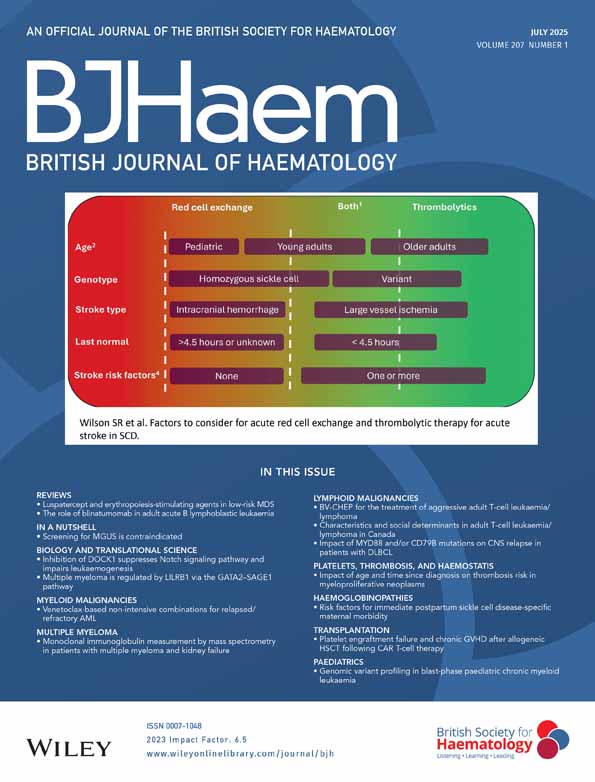Successful treatment of severe intra-abdominal bleeding associated with disseminated intravascular coagulation using recombinant activated factor VII
Abstract
Recombinant activated factor VII (rFVIIa) is indicated mainly for the treatment of patients with haemophilia and inhibitors. However, little information is available on the use of rFVIIa in the treatment of the severe bleeding associated with disseminated intravascular coagulation (DIC). We report a pregnant woman with DIC, who developed severe intra-abdominal bleeding after caesarean section. Despite treatment with fresh-frozen plasma, fibrinogen, platelet transfusions and surgery, the abdominal bleeding persisted and intravenous treatment with rFVIIa was initiated. The response to treatment was rapid, with control of the bleeding and resolution of the coagulopathy. No side-effects related to rFVIIa were noted. This case suggests a potential role for rFVIIa in the treatment of severe and refractory bleeding associated with DIC.




